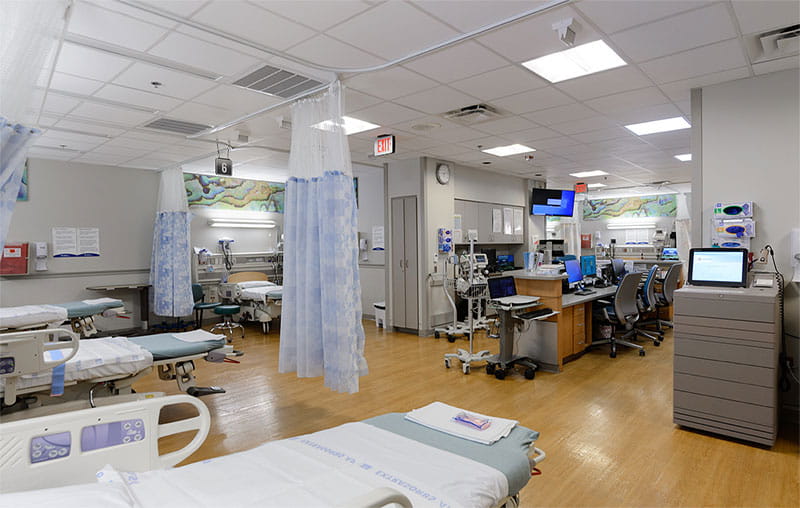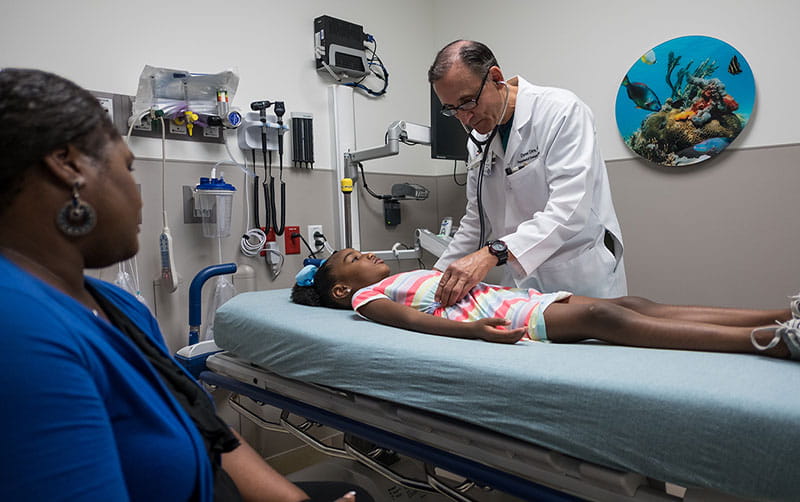More than 103,000 Americans need an organ transplant, with 85% of those waiting for a kidney. Living donation shortens wait times for the recipient and has better results compared to deceased donors.
Surgeons performed the first successful organ transplant in the U.S. nearly 70 years ago. Since then, surgery has improved dramatically. Nephrectomy, or the surgical removal of a kidney, has gone from an open surgery to a minimally invasive procedure.
Surgeons now use robotic technology to perform minimally invasive nephrectomies.
Dr. Elizabeth Thomas is a transplant surgeon at University Health. “Every time I do a donor surgery, it’s an incredible obligation to give that patient the best possible surgery,” Thomas said. “Robotics ... (allow) us to perform a better and safer surgery.”
During an open nephrectomy, the surgeon makes a large incision in the donor’s abdomen. He or she will cut the blood vessels and ureter from the kidney and remove it.
Laparoscopic Nephrectomy
Open nephrectomy has been almost entirely replaced by laparoscopic nephrectomy. Laparoscopic nephrectomy is minimally invasive. It uses several small incisions instead of a single large one.
In laparoscopic surgery, surgeons place a wand-like camera (laparoscope) through a small incision in the abdomen. The laparoscope allows them to see inside the abdomen. The surgeon removes the kidney, which is passed through another small incision.
Donors who undergo laparoscopic surgery have:
- Shorter recovery times
- Shorter hospital stays
- Fewer post-operative complications
Benefits of Robotic Surgery for Living Kidney Donors
Robotic surgery is the next frontier in living kidney donation. During the procedure, the surgeon operates through small incisions using tiny instruments. The system translates every hand movement from the surgeon in real-time with greater precision, accuracy and range of motion.
Traditional laparoscopic cameras are only 2D, but robotic systems come with a high-definition 3D camera to view the surgical area. “The visualization is incredible,” said Thomas. “It magnifies 10 times as much, and if you can see better, you can operate better.”
Another Option for Living Kidney Donors
For living donors, robotic surgery is a safe alternative to conventional laparoscopic nephrectomy. Benefits of robotic surgery include shorter hospital stays and decreased post-operative pain. Plus, there is no compromise on the quality of the transplanted kidney. There was no difference in operative time, intraoperative bleeding or complication rates.
Procedures performed with robotics may also be better for donors with higher body mass index. This would widen the pool of donors eligible for kidney donation.
“If there is something I can offer that will minimize pain, improve recovery time, and provide better options via operative techniques, I would want to do for any patient but especially for our donors,” Thomas said. “And that is exactly what robotics is offering.”
Become a Living Kidney Donor
University Health offers the da Vinci® Robotic Surgical System. Learn how to become a living donor on our website.





